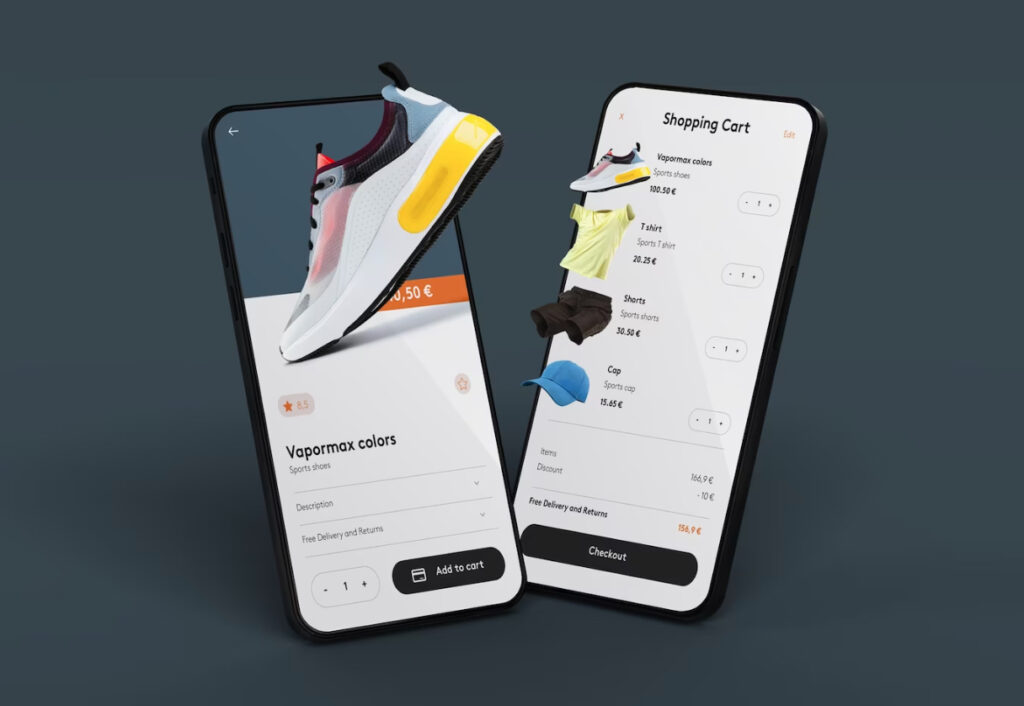Well-designed eCommerce product pages play a crucial role in driving conversions and enhancing user satisfaction. When potential customers visit an online store, the product page serves as their primary point of interaction with the product and the brand. It is essential to create a compelling and seamless experience that not only captures their attention but also guides them towards making a purchase.
By implementing best practices for eCommerce product pages, businesses can significantly increase their chances of converting visitors into customers. A well-optimized product page provides clear and concise information about the product, showcases high-quality visuals, and establishes trust through user-generated reviews and ratings. It also incorporates intuitive design and layout, SEO optimization, and a seamless user experience.
In this blog post, we will explore the top strategies and best practices to create effective eCommerce product pages. We will dive into the importance of title tags and meta descriptions, discuss content optimization techniques, highlight design and layout considerations, explore SEO optimization tactics, and provide insights on enhancing user experience. Additionally, we will cover the significance of social proof and trust signals, as well as conversion rate optimization (CRO) techniques to maximize sales.
By the end of this post, you will have a comprehensive understanding of how to optimize your eCommerce product pages, captivate your audience, and drive conversions. Let’s get started!
Title Tags and Meta Descriptions:
Title tags and meta descriptions are essential elements of a well-optimized eCommerce product page. They play a crucial role in improving search engine visibility and increasing click-through rates. Let’s explore their significance and learn how to write effective title tags and compelling meta descriptions while adhering to the character limits.
Title tags are HTML elements that specify the title of a webpage. They appear as the clickable headline in search engine results pages (SERPs) and are a significant ranking factor for search engines. A well-crafted title tag not only helps search engines understand the content of the page but also entices users to click on the link.
Meta descriptions, on the other hand, are brief summaries that provide a concise overview of the webpage’s content. While they do not directly impact search rankings, they have a substantial influence on click-through rates. A compelling meta description can persuade users to click on your link instead of others in the search results.
Writing effective title tags within the character limit of 70:
To create effective title tags, consider the following tips:
- Include your primary keyword: Incorporate the main keyword relevant to your product in the title tag to improve search engine visibility.
- Keep it concise: Ensure your title tag remains within the character limit of 70 to avoid truncation in SERPs.
- Make it compelling: Craft a title that captures attention, entices users to click, and accurately represents the content of the page.
- Include branding (if applicable): If your brand is well-known or adds value to the user’s decision-making process, include it in the title tag.
Crafting compelling meta descriptions within the character limit of 160:
To create compelling meta descriptions, consider the following guidelines:
- Engage and persuade: Write a concise and captivating summary that entices users to click on your link. Highlight key benefits or unique selling points.
- Include a call-to-action (CTA): Use action-oriented language to prompt users to take action, such as “Shop now,” “Learn more,” or “Discover the perfect [product].”
- Be accurate and relevant: Ensure that the meta description accurately reflects the content of the page to set proper expectations for users.
- Utilize keywords: Incorporate relevant keywords naturally to improve the visibility of your meta description in search results.
Remember, both title tags and meta descriptions should be unique for each product page to optimize search engine visibility and increase click-through rates. By crafting compelling and informative title tags and meta descriptions, you can enhance the visibility and attractiveness of your eCommerce product pages in search results.
Content for eCommerce Product Pages
- Provide accurate and detailed information about the product’s features, benefits, and specifications.
- Highlight unique selling points and address potential customer concerns.
- Use high-resolution images and videos to showcase the product from various angles.
- Enable zoom functionality and include alternative images to enhance the visual experience.
- Display genuine customer reviews and ratings to build trust and provide social proof.
- Encourage customers to leave reviews through follow-up emails and incentives.
- Include comprehensive information about the product’s dimensions, materials, and functionalities.
- Clearly communicate any technical specifications or compatibility requirements.
- Display the price prominently, including any discounts or promotions.
- Provide transparent pricing information, including shipping costs and applicable taxes.
- Highlight any special offers or limited-time deals to create a sense of urgency.
- Use clear and action-oriented language on CTA buttons, such as “Add to Cart” or “Buy Now.”
- Make sure the buttons stand out visually and are easy to locate on the page.
- Consider using persuasive elements like scarcity or social proof in the CTAs.
Design and Layout
- Keep the layout clean and organized, with a logical flow of information.
- Use consistent typography, colors, and visual elements to maintain brand identity.
- Ensure that the design is intuitive and easy to navigate, reducing user friction.
- Incorporate your brand logo and colors throughout the product page to reinforce brand recognition.
- Use high-quality images and videos that align with your brand’s aesthetic and messaging.
- Maintain a cohesive visual experience across all pages of your eCommerce website.
- Optimize your product pages for mobile devices to provide a seamless experience on smaller screens.
- Ensure that the content, images, and CTAs are appropriately scaled and optimized for mobile viewing.
- Test your product pages across different mobile devices and screen sizes to guarantee compatibility.
SEO Optimization
- Conduct thorough keyword research to identify relevant search terms for your product.
- Incorporate these keywords naturally throughout your product page content, including headings, descriptions, and alt text for images.
- Avoid keyword stuffing and focus on creating valuable, informative content.
- Create concise and descriptive URLs that include relevant keywords.
- Use H1 and H2 headings to structure your page content and include relevant keywords in these headings.
- Optimize meta tags, including title tags and meta descriptions, with targeted keywords.
- Incorporate internal links within your product pages to guide users to related products or relevant information.
- Consider including external links to authoritative sources or relevant product reviews to provide additional value to users.
- Ensure that all links are functioning properly and do not lead to broken or irrelevant pages.
User Experience (UX) Optimization
- Optimize your product page’s loading speed by compressing images, minimizing code, and utilizing caching techniques.
- Test the page’s speed using tools like Google PageSpeed Insights and address any issues or bottlenecks identified.
- Provide a smooth and swift browsing experience to prevent user frustration and abandonment.
- Implement a user-friendly navigation menu that allows visitors to easily find and explore different product categories.
- Include a prominent search bar to facilitate quick product searches.
- Optimize your search functionality to provide accurate and relevant results.
- Ensure that your product pages are optimized for mobile devices, offering a seamless browsing experience on smartphones and tablets.
- Utilize responsive design techniques to adapt the layout and content to different screen sizes.
- Test your product pages across various mobile devices and browsers to ensure consistent performance.
- Place important product information, such as price, description, and key features, in easily scannable sections.
- Use bullet points or concise paragraphs to highlight crucial details.
- Consider using visual elements like icons or infographics to convey information more effectively
Conclusion
Optimizing eCommerce product pages is crucial for driving conversions and improving user satisfaction. By following best practices and implementing effective strategies, you can create a seamless and engaging experience that encourages visitors to become customers. Let’s recap the key points discussed in this blog post.
We began by highlighting the importance of well-designed eCommerce product pages and their impact on conversions. We then explored the role of title tags and meta descriptions in search engine visibility and click-through rates. Writing effective title tags within the character limit of 70 and crafting compelling meta descriptions within the character limit of 160 is vital for capturing user attention and driving traffic to your product pages.
Next, we delved into the content optimization strategies for eCommerce product pages. Clear and concise product descriptions, high-quality visuals, user-generated reviews and ratings, detailed specifications, pricing information, and effective call-to-action buttons are all crucial elements to include.
Design and layout considerations were also discussed, emphasizing the importance of intuitive and user-friendly designs, consistent branding, and mobile responsiveness. These factors contribute to a positive user experience and build trust with your audience.
SEO optimization plays a significant role in improving the visibility of your product pages in search engine results. Conducting keyword research, optimizing URLs and headings, and incorporating internal and external linking strategies can enhance your page’s ranking and drive organic traffic.
A seamless user experience is essential for converting visitors into customers. Optimizing page loading speed, implementing easy navigation and search functionality, mobile optimization, and providing clear and prominent product information all contribute to a positive user experience.
Additionally, we explored the significance of social proof and trust signals, such as customer testimonials and trust badges, in building credibility and enhancing conversions. Lastly, we touched on conversion rate optimization (CRO) techniques, including A/B testing, streamlining the checkout process, and personalization.
By implementing these best practices, you can create highly effective eCommerce product pages that captivate your audience, boost conversions, and drive business growth. Remember to continuously monitor and analyze your page performance to identify areas for improvement.
Now armed with these insights and strategies, it’s time to optimize your eCommerce product pages and unlock their full potential. Start implementing these best practices today and enjoy the benefits of increased conversions and enhanced user satisfaction. Happy optimizing!


